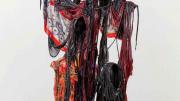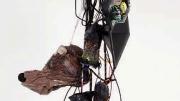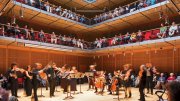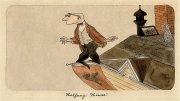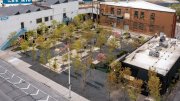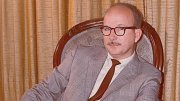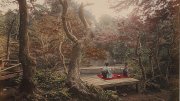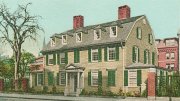Artist Kevin Beasley’s sculptures resonate with what’s not there. He typically uses found objects, from Air Jordans and T-shirts to feathers and amplifiers, and molds them into eerily inhabited shapes or spaces using resin or polyurethane foam. “His work is largely thinking about how he can evoke sites and histories and bodies that are no longer present,” says Ruth Erickson, Mannion Family curator at the Institute for Contemporary Art/Boston, where 16 of Beasley’s works are on display through August 26.
Among them is If I was standing alone I wouldn’t stand it at all (2017). The nearly eight-foot-high piece is crafted from housedresses, kaftans, shirts, and du-rags tied or draped together to coalesce into a group of ghostly figures. Mourners? Witnesses? A family? There’s a sense of haunting, of darkness, and yet also of strength and vitality, reflected in its size, feeling of motion and group unity, and through clothing dyed in brilliant purples and yellows and oranges.
The Virginia-born Beasley is a relatively young artist on the rise. He holds fine-art degrees from the College for Creative Studies, in Detroit, and Yale, and was included in the Whitney Biennial in 2014, and in a landmark show on electronic and new-media art at the Metropolitan Museum of Art. In 2015, the Guggenheim Museum exhibited two Beasley sculptures it had commissioned: Strange Fruit (Pair I) and Strange Fruit (Pair II). They feature Air Jordans and other everyday items hanging like a bunch of grapes, but are clear references to the protest song made famous by Billie Holiday, about the lynchings of black men. Microphones and speakers connected to the pieces absorbed and emitted ambient sounds.
“In the same way that housedresses or sneakers lying on their sides can evoke an absence,” Erickson points out, “he’s very interested in materiality of sound, to connect bodies, reverberate through bodies, and connect spaces.” At the ICA, Phasing (Ebb) (2017) also combines clothing and audio equipment—in this case, the microphone is placed elsewhere within the museum, picking up conversations that are then played from amplifiers linked to the sculpture. “It references the dislocation of the origin of sound and the place of its reception,” according to Erickson. It’s another ghost, or could be seen as ghostly mourners, or Greek chorus figures, she adds, offering a stream of actual voices bantering in real time. But the words and the context are disassociated, as if no one is even noticing or speaking to the raw embodiments at hand.
